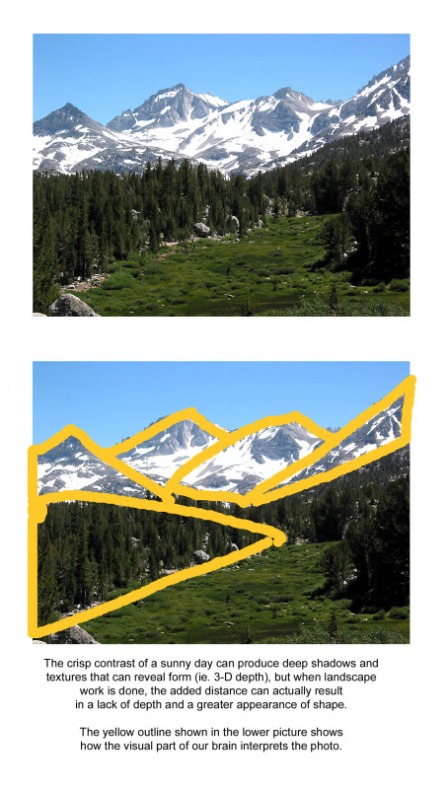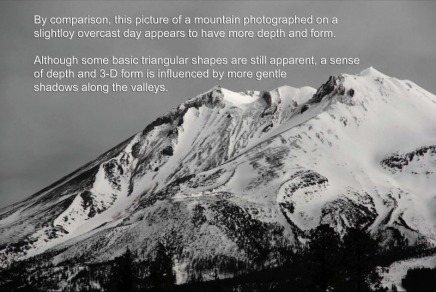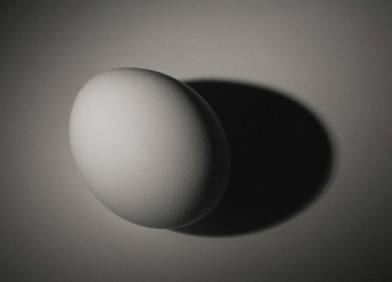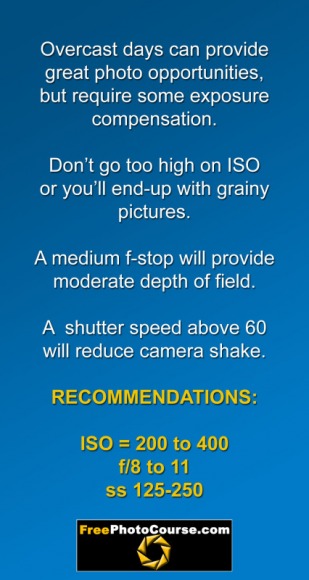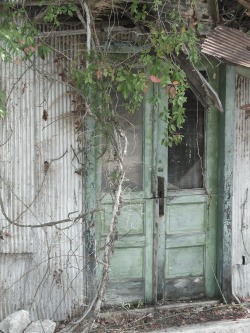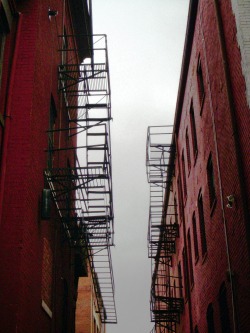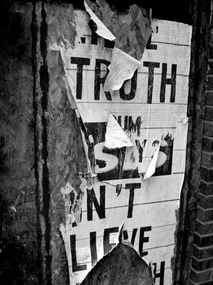|
Photography Tip #13: Waiting For the Right Light...Using Overcast Days |
|
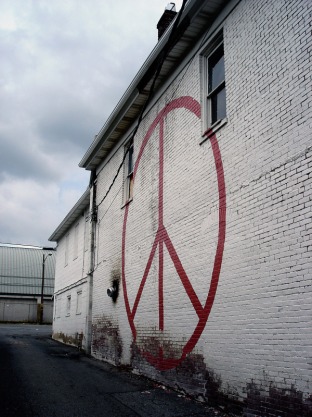 See how the low cloud ceiling and its lack of contrast help the peace sign to take center stage. Because of the lower contrast, we can appreciate and better discern the subtlety of the peeling paint at the bottom of the symboll. As well, the overall mood has a built-in serenity that better matches the mood, than would a bright sunny day. |
|
|
Take a look at the scenes to the left and below. In one picture, the camera captures the ridge of mountains on a bright sunny day, revealing the jagged shape of the range. The other picture, photographed on an overcast day, provides more depth than shape, revealing soft relief and form. Both are excellent pictures, but they produce entirely different feelings. |
|
|
|
For those who already know their way around the f-stop and shutter speed wheels, here is a handy tip. When using a camera outside on a heavily overcast or dark day, we suggest using a combination of a slightly higher ISO (around 200-400), medium aperture (f/8-11) and average shutter speed (1/125). This gives you more flexibility and the best possible picture quality, but experiment, because available light can change a lot.
Urban Photographers Love Overcast Days...
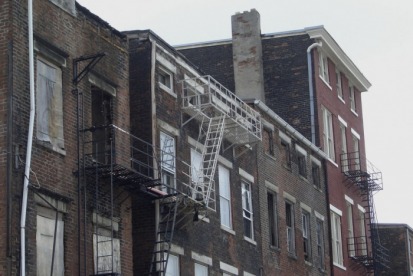
So, what exactly is an "Urban Photographer"? This breed of brave, creative folk scour big city streets for the iconic-symbolic aspects of gritty urban life, from the people on busy street corners who move along as they interact with each other and the city itself, to the crumbling and old or shiny and new architecture. Most often, though, these creative visual artists seek out the old, grungy and character-filled parts of a city - often areas that are now in various states of decay and ruin, but speak volumes to what has been, had occurred and is now.
Imagine a street corner bustling with people. Imagine the scene in black and white. Now imagine how it is transformed on an overcast day - perhaps even a rainy day. Whether the subject is people within the city or the physical elements that make up a city, overcast days can be quite magical for the urban photographer.
Imagine a street corner bustling with people. Imagine the scene in black and white. Now imagine how it is transformed on an overcast day - perhaps even a rainy day. Whether the subject is people within the city or the physical elements that make up a city, overcast days can be quite magical for the urban photographer.
SITE LINKS:
HOME PHOTO TIPS INDEX FULL COURSE INDEX "HOW TO" INDEX PHOTO FORUM
SITE SEARCH CONTRIBUTOR'S GALLERY CAMERA & GEAR STORE FREE DIGITAL IMAGES
© FreePhotoCourse.com. All rights reserved. Reproduction, storage, copying, publishing, manipulation, digitizing or selling of any of the text or photos on this website is strictly prohibited. Under no circumstances shall any part of the content on this website be plagiarized or referenced as the work of an author or photographer. Re-selling of any of the content on this site is strictly prohibited. The lessons on this website were provided free of charge for individual home users; if you paid for any of this you have been cheated. Please report any misuse, sale or plagiarism of this material here OR E-MAIL US AT: CONTACT@FREEPHOTOCOURSE.COM
Browse, learn, purchase and explore with confidence.
Certified virus-free, malware-free, spyware-free, scam-free and spam-free.
Associate-Sponsor Disclosure Content Download & Terms of Use Privacy Policy Contact Us Contributor's Gallery Terms of Use Forum Terms of Use
Certified virus-free, malware-free, spyware-free, scam-free and spam-free.
Associate-Sponsor Disclosure Content Download & Terms of Use Privacy Policy Contact Us Contributor's Gallery Terms of Use Forum Terms of Use

